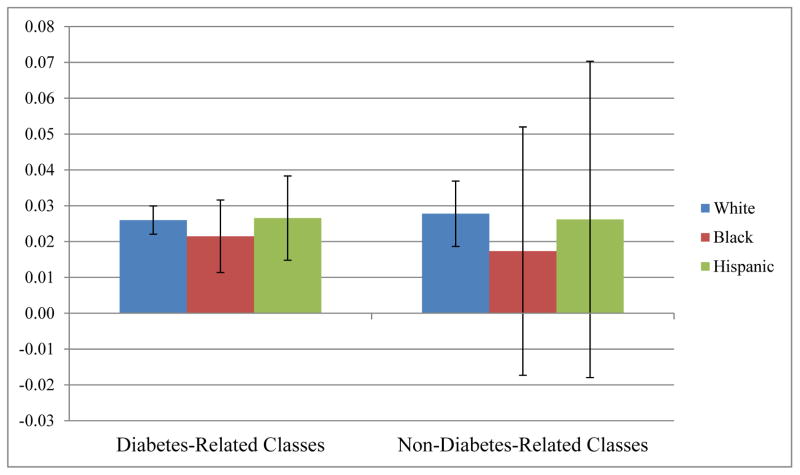Figure 2.
Regression Adjusted Difference-in-Difference in Use of Generic Substitutes (GDR), by Race (percentage point)
GDR refers to the Generic Dispensing Rate. Changes are based on results from multivariate models which control for age, age-squared, gender, comorbid conditions, and socioeconomic status. GDR for ACE/ARB class is for ACE Inhibitors only since ARB class is brand-dominated. This analysis is limited to therapeutic classes which are neither brand nor generic-dominated. Diabetes-related classes include: oral hypoglycemic agents, ACE inhibitors, calcium channel blockers, diuretics, beta blockers, angiotensin II receptor blockers (ARBs), statins, digitalis glycosides, and combination antihypertensives. ACE inhibitors and ARBs are combined into a single class because they are commonly considered therapeutically interchangeable. The set of other drugs consists of the nine most prevalent nondiabetes-related classes used by this set of beneficiaries: platelet aggregation inhibitors and antiulcerants. Diabetes-related drug classes: Whites who received the low-income subsidy (LIS): n=70,284; Whites who did not receive the low-income subsidy (non-LIS): n=104,784; LIS blacks: n=24,412; Non-LIS blacks: n=5,475; LIS Hispanics: n=27,159; Non-LIS Hispanics: n=3,736. Nondiabetes-related drug classes: LIS whites: n=61,860; Non-LIS whites: n=76,652; LIS blacks: n=19,054; Non-LIS blacks: n=3,339; LIS Hispanics: n=22,485; Non-LIS Hispanics: n=2,668.

